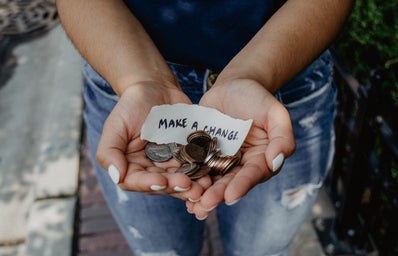International Women’s Day (IWD): a day of global togetherness that honours the countless achievements of women, both past and present. Coupled with celebration, this annual international date also sparks continued calls to action for equal treatment, representation, and universal equality for all genders. Consequently, many companies feel compelled to share messages of solidarity, stories of inspirational female employees, and testimonials in a demonstration of support and unity.
However, on International Women’s Day this year, a Twitter bot was created by a UK couple in order to expose numerous organisations who still harbour distinct gender pay gaps, despite explicit expressions of support on their social media.
The Twitter account, @PayGapApp, was created by Francesca Lawson and her partner, Ali Fensome, and now has over 255,000 followers. The bot reports on differences in leading corporations between women’s median hourly pay, and their male counterparts.
But how does it work? Lawson and Fensome utilised a law constituted in 2017 that necessitates UK companies with 250 or more employees to declare their annual gender pay gap disparities to the UK Government Gender Pay Gap Service. Exploiting Fensome’s software consultancy background, the couple constructed the bot to identify tweets featuring International Women’s Day keywords, including their main hashtag #BreakTheBias. The bot then matches relevant company names to data from the aforementioned UK Government Service, and proceeds to publicly respond and publish the gender pay gap figures via a quote retweet.
“In this organisation, women’s median hourly pay is 31.4% lower than men’s”, read one tweet from the bot, when responding to an International’s Women’s Day tweet by lingerie company Boux Avenue, with a photo of naked women holding up signs declaring self-love. Hundreds of other organisations have been outed for their apparent hypocrisy, including the National Cancer Institute, various English county councils, Thames Valley Police, NHS Trusts, private schools, and national newspapers such as the Daily Express.
Lawson noted that the bot “was inspired by the frustration at seeing companies treat International Women’s Day as a marketing opportunity”, with companies having “nowhere to hide” about gender inequality. Instead of organisations offering “fluffy and emotional but essentially vague” posts and campaigns, Lawson hopes this will bolster honesty in organisations’ social media communications around IWD, encourage organisations to acknowledge their gender pay gap, and outline their actions and plans to reduce the gap and promote equality. Lawson has also expressed hope that this model of outing companies could be utilised to improve brand communication around other social justice events such as Pride and Black History Month.
With the Twitter account going viral, many have expressed exceptional surprise and disdain at how many organisations still have significant alarming gender pay gaps. However, government data shows that in the UK, among full time employees, the gender pay gap was 7.9%, as of April 2021. According to the UK Government Gender Pay Gap Service, common reasons for gender pay disparities in organisations include gender imbalance in promotions, women being more likely to be recruited into lower paid roles, lack of support for part-time employees to progress, and people becoming stagnant at certain levels within organisations.
Although the persistence of the global gender pay gap is undoubtedly worrying, technology like the @PayGapApp has the potential to shine a new light on this fundamental social and political issue, enabling real transparency and much needed change. Let’s hope that by next year’s International Women’s Day, a tangible difference can be seen in the closing of the gender pay gap.


